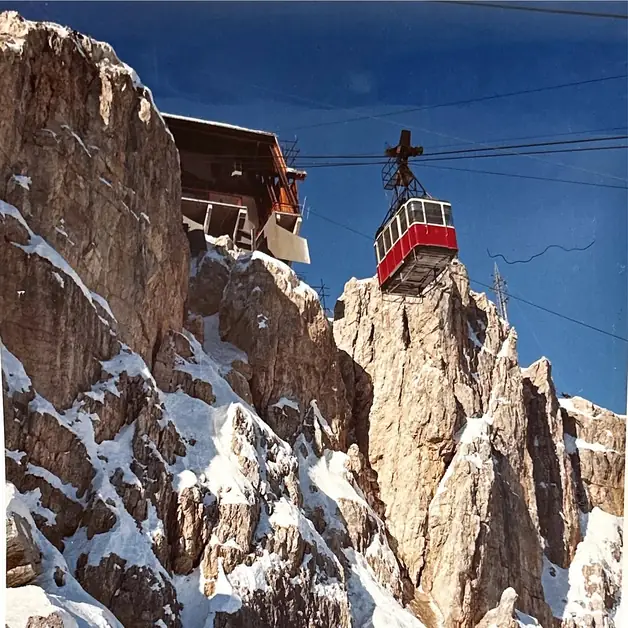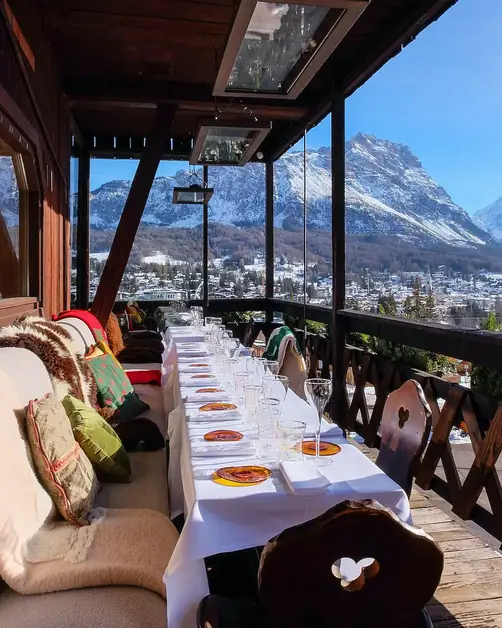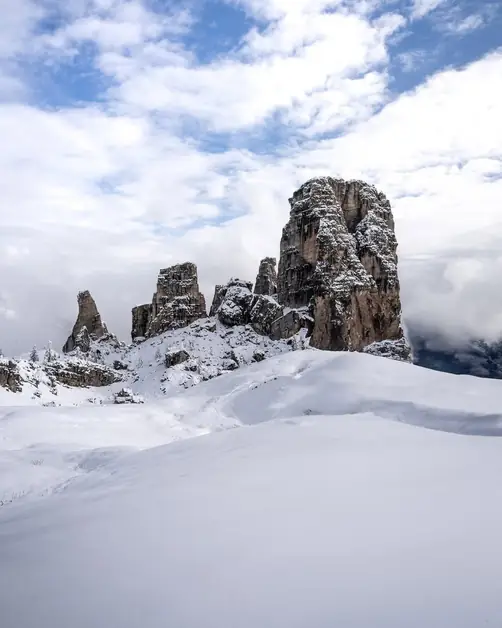The Belvedere Cable Car and Winter Tourism in Cortina
The Belvedere cable car of Pocol marked the beginning of winter tourism in Cortina d'Ampezzo, revolutionizing access to the mountains and creating a model for modern ski resorts.

What does the Belvedere cable car of Pocol represent in the history of Cortina d'Ampezzo?
The history of winter tourism in Cortina d'Ampezzo has a precise turning point: the year 1924, when Baron Carlo Franchetti inaugurated the revolutionary Belvedere cable car of Pocol. This facility connected Piazza Roma, at an altitude of 1224 meters, with the Belvedere of Pocol, located at 1543 meters.
It was a visionary project, one of the first examples of technology dedicated to sports and recreational activities at high altitude. The cable car transformed the way of experiencing the mountains, opening the doors to a future made of sports, snow, tourism, and innovation.
This structure not only facilitated access to the slopes of Pocol but also boosted the modern concept of ski resorts, helping to shape Cortina's identity as the queen of the Dolomites.
Why was the Belvedere cable car of Pocol so innovative for its time?
In the 1920s, reaching panoramic points and snow-covered slopes was not easy at all. Transportation was limited, roads were often snow-covered, and excursions required hours of walking. The Belvedere cable car revolutionized all this.
For the first time, mountain enthusiasts, skiers, and tourists could quickly reach a high-altitude viewpoint without effort. This allowed Cortina to open up to winter tourism, defining a model that would be imitated throughout the Alpine region.
Baron Franchetti's project was considered cutting-edge not only for its technological aspect but also for its vision: he realized that the mountains could become a place for sports and fun for everyone, not just for experienced climbers.
How did winter tourism in Cortina develop after 1924?
After the opening of the Belvedere cable car, Cortina d'Ampezzo embarked on an extraordinary growth path. In the following years, new slopes were created, more modern facilities were built, and the number of snow sports enthusiasts increased significantly.
Between the 1930s and 1940s, the first ski lifts and chairlifts were built, allowing more and more people to experience skiing without facing long ascents.
The arrival of the cable car also contributed to the enjoyment of the magnificent panorama of the Belvedere of Pocol, a natural balcony overlooking the Ampezzana basin that soon became one of the most beloved spots by visitors.
The growing flow of tourists then pushed Cortina to improve hospitality, with new hotels, lodges, restaurants, and services dedicated to sports enthusiasts.
How did Cortina become a reference point for international skiing?
The combination of modern facilities, spectacular landscapes, and abundant snow transformed Cortina into an international center for winter sports.
The decisive step came with the organization of the 1956 Winter Olympics, an event that made the location famous worldwide. Images of the Dolomites, the races on the Tofane, the new infrastructures, and the glamorous atmosphere contributed to creating the myth of Cortina.
The 1950s and 1960s marked a golden age: new chairlifts, cable cars, iconic slopes, and a cultural vibrancy that transformed the location into a symbol of alpine elegance.
The sporting tradition continues today with World Cup races and the upcoming Milan-Cortina 2026 Winter Olympics.
What places and slopes are linked to the history of tourism origins in Pocol?
The Belvedere of Pocol area is still an extraordinary panoramic point today. From here, one can see the Ampezzana basin, the Tofane, and the woods that characterize the landscape.
Among the places that are part of the history of this tourist development are:
The Military Shrine of Pocol, which tells an important part of the valley's history. The ancient slopes that connected Pocol to the center of Cortina. The woods and trails that today host trekking and trail running paths. The ski areas of Socrepes and Lacedel, among the first to develop after the opening of the cable car.
The area is also perfect for families, thanks to gentle trails and the natural context that allows one to breathe in the authentic mountain atmosphere.
Why is the 1924 cable car still considered a symbol of modern alpine vision?
The legacy left by Baron Franchetti goes beyond the mere construction of a lift system. The Belvedere cable car represents the starting point of a new way of experiencing high altitude.
Today, when we talk about alpine tourism, we think of modern facilities, prepared slopes, welcoming lodges, and services designed for every type of visitor. All this, in part, originated thanks to that first cable car of 1924.
Its cultural and historical importance transforms this episode into a fundamental piece of the history of the Dolomites, a visionary idea that allowed Cortina to become one of the most beloved and iconic destinations in Europe.
The story of the Belvedere cable car is an invitation to discover the Pocol area with new eyes, understanding how technology, passion for the mountains, and pioneering spirit have given rise to a unique tourist experience in the alpine landscape.




